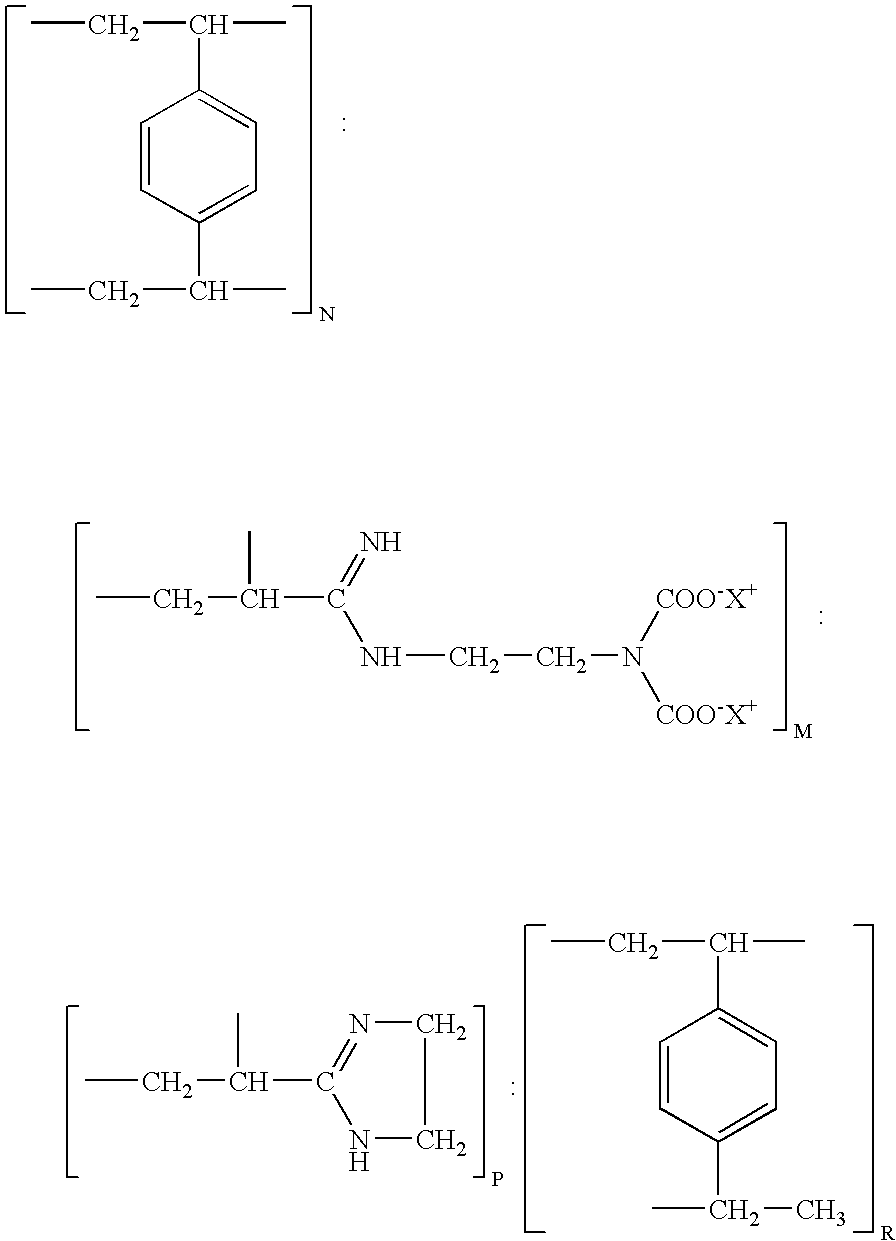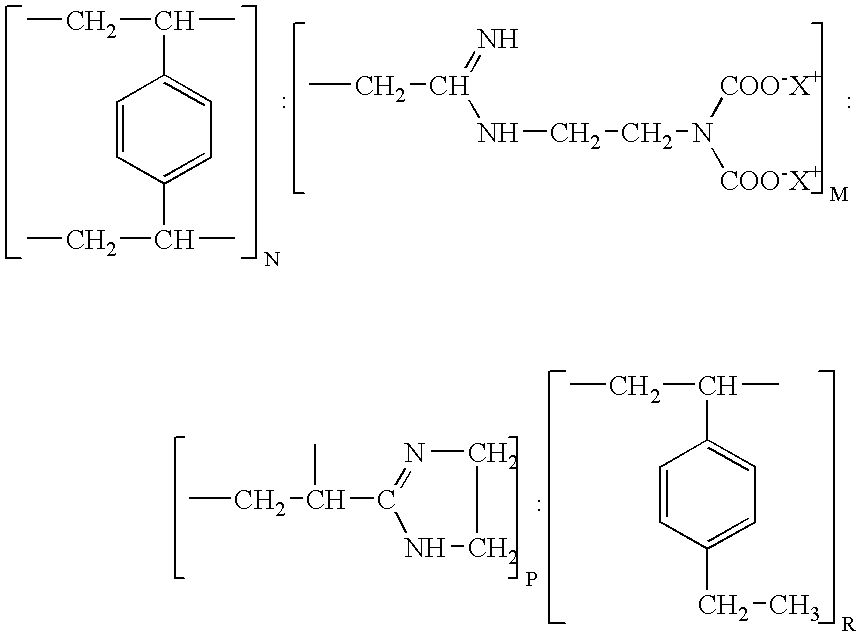Resin and process for extracting non-ferrous metals
a non-ferrous metal and resin technology, applied in chemical/physical processes, chromium compounds, inorganic chemistry, etc., can solve the problems of unsuitable filtration techniques, unsuitable for the solid/liquid separation step, and the inability to meet the requirements of solid/liquid separation steps
- Summary
- Abstract
- Description
- Claims
- Application Information
AI Technical Summary
Benefits of technology
Problems solved by technology
Method used
Image
Examples
example 1
[0041] This example involved the extraction of nickel and cobalt from a test solution in the form of a tailing solution of a nickel / cobalt production plant.
[0042] The example was performed in a 700 ml-glass fixed-bed column containing an ion-exchange resin in accordance with the resin described above. The test solution was pumped into the top of the column such that it cascaded downwardly over the resin to collect at the bottom of the column. A peristaltic pump was used to pump the solution at the desired rate to the top of the column and a valve at the bottom of the column was used to control the rate at which barren solution was discharged from the column.
[0043] The test solution was pumped to the top of the column at 3-5 vol / vol / hr, or 2.1-3.5 L / hr for 40 hours and had a pH of about 5.5. Nickel concentrations in barren liquor discharged from the bottom of the column were monitored every 60 minutes until the nickel concentration exceeded a predetermined value, which, based on th...
example 2
[0049] This example involved the extraction of nickel and cobalt from a high-pressure laterite leach slurry.
[0050] The leach slurry was prepared in a titanium autoclave at a temperature ranging from 220-230° C. with sulphuric acid solution. The pregnant leach slurry had a pH of about 0.8, a specific gravity of about 1.48 and a solids concentration of about 29.4 w / w %.
[0051] The pH of pregnant leach slurry was adjusted by adding a limestone pulp several hours before the extraction stages. The slurry after neutralisation had a pH of about 4.5 and a solids concentration of about 36.0 w / w %.
[0052] The first step of the metals extraction was then to feed the solution to an absorption circuit that comprised ten reactors connected in series. Each reactor was made of a borosilicate glass and housed a basket made of stainless steel mesh that containing about 100 mL of an ion-exchange resin in accordance with the resin described above. The slurry was conducted through the reactors, from re...
example 3
[0061] This example involves that extraction of copper from a copper rinsing solution. The copper concentration in the rinsing solution, prior to copper extraction, was in the range of 50-80 ppm.
[0062] The sorption stage was performed in a 4 L-glass moving-bed column filled with the ion-exchange resin. The rinsing solution was fed into the bottom of the column and discharged from the top at the rate of about 20 L / hr.
[0063] Resin moved in countercurrent to the solution and was fed into the top of the column and removed from the base in 10 mL batches every 2 hours.
[0064] The copper concentration in the exit solution was less than 0.02ppm. The resin loading capacity reached 20-32 g / l of copper depending on the copper concentration in the rinsing solution.
[0065] Desorption was performed by contacting the loaded resin with a 10% sulphuric acid solution. The copper concentration in the eluate reached 20-32 g / L.
[0066] It is envisaged that the eluate produced according to this example ...
PUM
| Property | Measurement | Unit |
|---|---|---|
| diameter | aaaaa | aaaaa |
| stability temperature | aaaaa | aaaaa |
| concentration | aaaaa | aaaaa |
Abstract
Description
Claims
Application Information
 Login to View More
Login to View More - R&D Engineer
- R&D Manager
- IP Professional
- Industry Leading Data Capabilities
- Powerful AI technology
- Patent DNA Extraction
Browse by: Latest US Patents, China's latest patents, Technical Efficacy Thesaurus, Application Domain, Technology Topic, Popular Technical Reports.
© 2024 PatSnap. All rights reserved.Legal|Privacy policy|Modern Slavery Act Transparency Statement|Sitemap|About US| Contact US: help@patsnap.com










